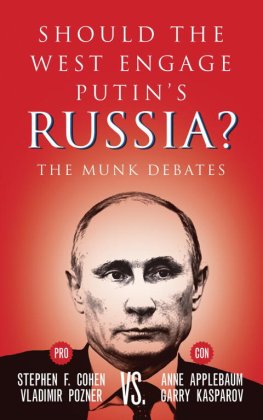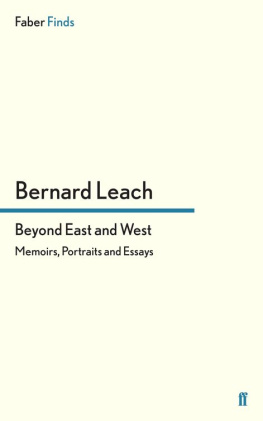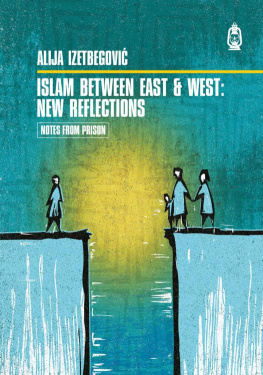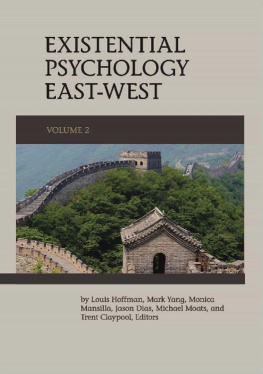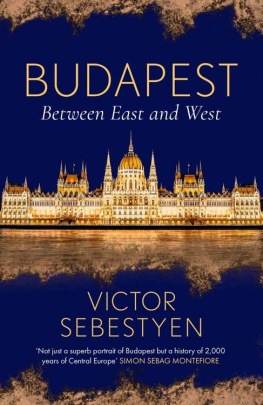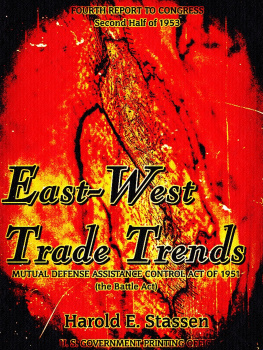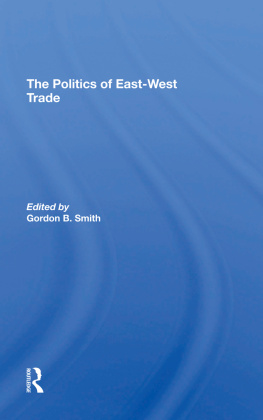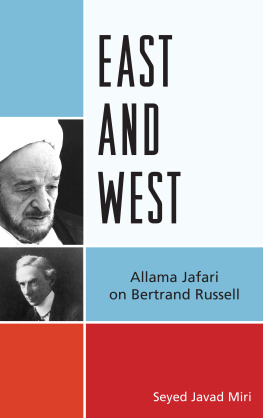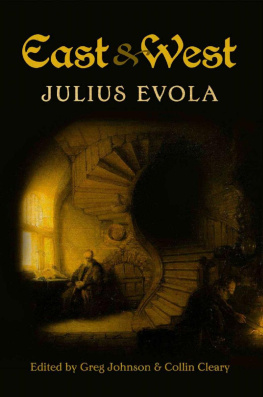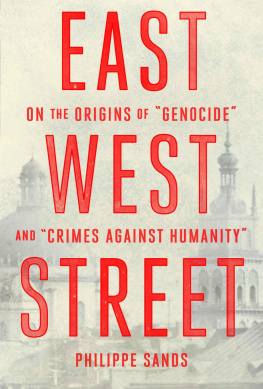Enn Epplbaum - Between east and west
Here you can read online Enn Epplbaum - Between east and west full text of the book (entire story) in english for free. Download pdf and epub, get meaning, cover and reviews about this ebook. genre: Non-fiction. Description of the work, (preface) as well as reviews are available. Best literature library LitArk.com created for fans of good reading and offers a wide selection of genres:
Romance novel
Science fiction
Adventure
Detective
Science
History
Home and family
Prose
Art
Politics
Computer
Non-fiction
Religion
Business
Children
Humor
Choose a favorite category and find really read worthwhile books. Enjoy immersion in the world of imagination, feel the emotions of the characters or learn something new for yourself, make an fascinating discovery.

- Book:Between east and west
- Author:
- Genre:
- Rating:3 / 5
- Favourites:Add to favourites
- Your mark:
- 60
- 1
- 2
- 3
- 4
- 5
Between east and west: summary, description and annotation
We offer to read an annotation, description, summary or preface (depends on what the author of the book "Between east and west" wrote himself). If you haven't found the necessary information about the book — write in the comments, we will try to find it.
Between east and west — read online for free the complete book (whole text) full work
Below is the text of the book, divided by pages. System saving the place of the last page read, allows you to conveniently read the book "Between east and west" online for free, without having to search again every time where you left off. Put a bookmark, and you can go to the page where you finished reading at any time.
Font size:
Interval:
Bookmark:
Anne Applebaum
Between east and west
For a thousand years, the geography of the borderlands dictated their fate.
The borderlands lie in a flat plain, crushed between the civilizations of Europe and those of Asia. East of Poland, West of Russia, their lack of mountains, seas, deserts and canyons has always made the borderlands easy to conquer. Five centuries ago, an army on horseback could march from a castle on the Baltic to a fort on the Black Sea without meeting a physical obstacle greater than a fast-running river or a wide forest. Even now, a spy running East from Warsaw to Kiev would find nothing natural to obstruct him. Distances are great, but messages to the King or the Khan or the Grand Duke or the Czar have always been easier to send here than in the more mountainous parts of Europe, because so little stands in the way of the messenger.
The borderlands' featurelessness attracted invaders, and the most celebrated the most threatening always came from the East. Long after the Mongol invasion of the thirteenth century, the name of the Golden Horde was still uttered in whispers, and the fame of the Turks, who attacked again and again from the sixteenth century to the eighteenth, has persisted as well. From the North came the most destructive invaders the rapacious Swedes, who destroyed the region utterly in the great Deluge of 1655, and the Muscovites who began their incursions into the borderlands at about the same time. The least expected invaders came from the South, where Moldovan princes rose up to claim more territory in the sixteenth century, and Cossacks rebelled, setting fire to villages, in the seventeenth. Those who ruled the longest always came from the West. From the twelfth century onwards, Poles and Lithuanians administered vast regions of the borderlands, while the Teutonic Knights controlled the northern Baltic corner, reigning for so long that their descendants, the Germans, came to believe East Prussia would belong to them in perpetuity.
The invasions came and subsided, each time leaving traces: ideas about architecture and literature and religion, words and idioms, boys with black eyes or girls with blonde hair. The pagan, Lithuanian names for rivers and forests stuck; so did the love of Turkish carpets and German tools. Sometimes there were larger changes. By the end of the eighteenth century, the Lithuanian, Belarusian and Ukrainian nobility had abandoned their older languages in favour of Polish. In the thirteenth century, the Teutonic Knights completed the region's first holocaust, destroying the indigenous people of Prussia and replacing them with Germans.
But most of the time, the Polonizations and Prussifications and Russifications, the drives to win Catholic converts, the crusades to build Orthodox churches, the plans to change churches into mosques came to nothing. The borderlands were simply too wide and too empty, it was too difficult for any invading nation to maintain permanent rule. Instead of uniformity, the waves of invasion created odd hybrids: the cathedral with a minaret in Kamenets Podolsky, or the town of Trakai, where five religions (Catholic, Orthodox, Jewish, Moslem, Karaim) once set up their houses of worship around a single lake. Throughout most of the borderland's history, the borderland peoples the peasants and the woodsman and even the nobility remained various. From town to town the local legends changed; from village to village the people sang different folk tunes with different melodies.
Because of the invaders' failure to bring about change, it could even be said that there were, until recently, no nations in the borderlands or at least no nation-states in the sense that we know them now. There were the nobility and the invaders the Poles and Russians and Germans and Tatars and Turks who sometimes changed roles, defeating one another only to be defeated in turn. There were the peasants: the Estonians and the Livonians who spoke Baltic tongues, the Mazurians and Kashubians who had Polish-German dialects all their own, the many descendants of the Slavic tribes Volhinians, Podolians, Polesians, Galicians, Braclavians, now known as Ukrainians or Belarusians who had similar words for sun, sky, and earth, but used the word chai for tea, if they lived in the east, and called the same beverage herbata if they lived in the west. In the cities and the villages there were Jews, more Jews than were found anywhere else in the world: Jewish merchants and tailors, poor Jews and rich Jews, Jews whose Yiddish dialects and religious customs differed from region to region along with those of their Slavic neighbors. Scattered among all of these peoples there were others, Armenians, Greeks and Hungarians, colonies of Tartars and Karaims, the descendants of war prisoners or merchants or heretics or criminals. For a thousand years, the peoples of the borderlands spoke their dialects, worshipped their gods, and let the waves of invaders wash over them, recede, and wash over them again.
With the nineteenth century came the first intimations of change. New ideas about nations and nationhood began filtering East, first from Napoleonic France, then from newly unified Germany, eroding older traditions, causing even those who were not noble to place themselves in national categories. In the eighteenth century, if a borderland peasant were asked about his nationality, he would probably have replied Catholic or Orthodox, or perhaps simply tutejszy: it means one of the people from here. But in the nineteenth century, the children of the tutejszy began moving to cities, where they became Polish, Russian, German, Lithuanian, Ukrainian or Belarusian. The numbers of tutejszy, the people without a nation, began slowly to diminish.
This process might have gone on for quite some time, but for the unexpected collapse of three borderland empires Czarist Russia, Austro-Hungary, and Prussia in 1918, at the end of the First World War. In the subsequent vacuum, a handful of brand new states, together with a clutch of ancient states which had long been ruled by others, issued proclamations of independence: Czechoslovakia and Yugoslavia, Hungary and Poland, Lithuania, Latvia, Estonia, and Soviet Russia. None of these states had set borders, all had claims on their neighbours' territory. The war of the giants has ended, wrote Churchill, the war of the pygmies begins.
At the peace conference which followed, the established nations of the West took it upon themselves to help re-draw the borders of the region according to what, at the time, were held to be rational principles. Peoples with sufficient national consciousness were to be recognised; those without were to be incorporated into others. Rules were drawn up, plebiscites held, exceptions made for history or expedience.
But in the end, borders in the borderlands were drawn by force. During the five-year course of the Russian civil war, no less than eleven armies from the forces of the independent Ukrainian Republic to the White Russians to the Bolsheviks to the Poles fought for possession of Ukraine. During the 19191920 war between newly independent Poland and newly established Soviet Russia, a million men marched back and forth across a thousand miles of territory, and at the final battle the last grand cavalry battle in European history 20 000 horseman charged back and forth at one another, sabres flashing.
The borders which emerged from the battles and the negotiations hardly satisfied anyone. The Germans disliked the strip of Poland which lay between East Prussia and Germany proper; the Lithuanians were furious that the Poles had claimed Wilno, their Vilnius. The Ukrainians still wanted their own state, and a handful of Belarusians felt the same way. Some of these grievances helped fuel the Second World War: territorial ambitions led Germany to invade first Czechoslovakia, then Poland. Rather than banding together to fight Germany, Poles, Lithuanians and Ukrainians quarreled and argued throughout the 1930's, and failed to come to one another's assistance during the war itself.
Font size:
Interval:
Bookmark:
Similar books «Between east and west»
Look at similar books to Between east and west. We have selected literature similar in name and meaning in the hope of providing readers with more options to find new, interesting, not yet read works.
Discussion, reviews of the book Between east and west and just readers' own opinions. Leave your comments, write what you think about the work, its meaning or the main characters. Specify what exactly you liked and what you didn't like, and why you think so.

